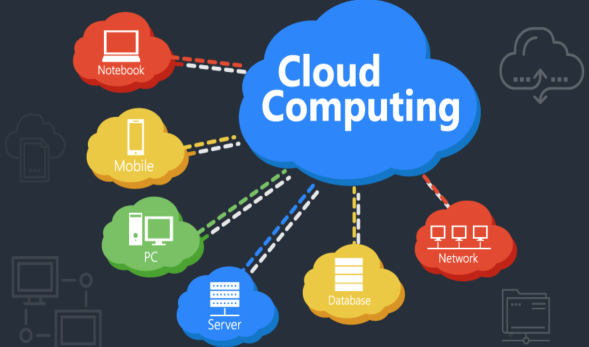For a while now, the cloud It is on everyone’s lips, but what is the cloud really? A large part of the companies take into account the cloud computing in their strategies, but another good part has serious doubts about it due to ignorance.
what is the cloud
When we talk about “the cloud” we are referring, exactly, to cloud computing. The cloud computing It is a set of computer services over a network such as the Internet, which fundamentally allows availability of computer system resources on demand. Thus, issues such as data storage or computation are available without direct management by the user.
The term is generally used to talk about data centers available anywhere, which can be accessed from any device connected to the internet. This enables virtualized technology service delivery that is often highly automated and can adapt to changing demand relatively easily.
Thus, the Benefits What can be expected from a cloud environment are a reduction in costs, a greater guarantee of availability and less exposure to vulnerabilities. In return, as long as the cloud service is not managed by the company itself, the pay-per-use model that has become popular in recent years is usually used.
Once this general framework has been defined, in order to answer the initial question, it must be taken into account that the concept cloud it is very wide. Generally, when we talk about a cloud service we are talking (although not always) about software as a service o SaaS: a software distribution model in which the applications are hosted by the service provider, making it available through the internet; without the need to host anything on the company’s own servers and, generally, with the possibility of constantly updating the product.
cloud types
Although the term is widely heard, companies usually have three doubts about the cloud: what is what There are types of cloud and what is the best option in each case. Solved the first question, let’s comment on the next two.
public cloud
This cloud ecosystem is managed by people outside the company; and therefore, the organization’s data is stored on the service provider’s servers cloud, although access to them is only possible for the company in question and not other clients. In addition to saving the information, the provider cloud It is also responsible for managing the service and maintaining the infrastructure.
This type of cloud can be worth for any company of all sizes since, in the pay-per-use model, companies can use the service when they need it, starting with low volume.
private cloud
It’s about a cloud of exclusive use, so that the hardware and software are dedicated to a specific company. In this modality, security is reinforced thanks to greater risk control and, in addition, the environment can be customized to adapt to the needs of the business.
Generally, the private cloud is used by large companies looking for a greater security or they have very strict regulations (for example, if they use sensitive data).
hybrid cloud
As its name indicates, the hybrid cloud combines the advantages of public and private. It is used in cases where a company needs more resources in its private cloud or on-premises infrastructure, and augments them with public cloud to handle extra workflows. Thus, at a certain moment due to a punctual increase in work, for example, it is possible to increase capacity without having to do it permanently.
The main advantage is the flexibility since, with a private infrastructure, public cloud resources can be used without losing the control and security of the private model. At the same time, the public model provides a pay-per-use system that saves costs.
